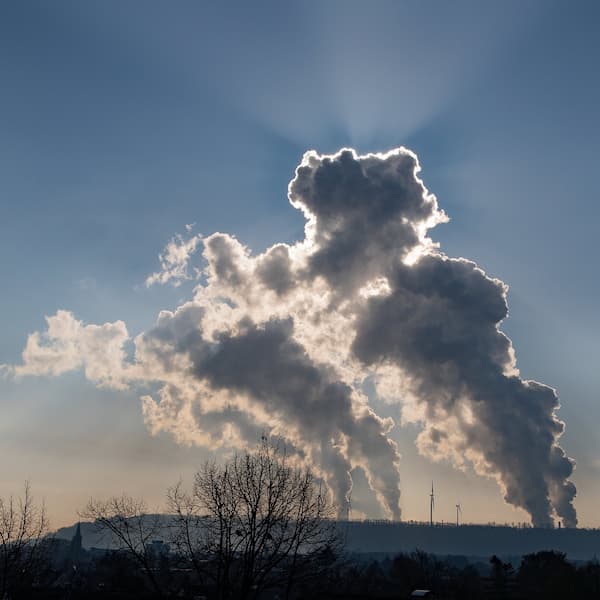ESG
Sustainable Investment: The Challenge For Investors

The Switzerland-based bank talks about the challenges of getting sustainable investment right and how to execute this strategy.
This news service is pleased to share these thoughts from
Frédéric Rochat, managing partner at Lombard Odier, on
what clients need to know about sustainable investment.
The whole sustainability/ESG agenda remains a large part of the
wealth sector landscape, even if some of the choices that
investors make aren’t as easy to execute as some might have
hoped.
The editors are pleased to add these comments to our conversation
on this topic; the usual disclaimers apply. Jump into the debate!
Email tom.burroughes@wealthbriefing.com
Sustainable investment has become a key topic for private and
institutional investors. However, the acronyms used (ESG, ITR,
SFDR, etc.), the complexity and the rapid developments in this
field leave many investors confused. The fundamental question we
are often asked is: why should we, and how can we, integrate
sustainability principles into portfolios?
Today, powerful market forces are at work to encourage and
facilitate an environmental transition that has become
indispensable: consumer pressure, regulatory actions, business
model transitions across industries and fair capital allocation
by investors.
In such a context, integrating sustainability principles into the
construction of portfolios supports a fundamental transition of
our economic models. It will also allow for better preservation
of invested assets, favouring companies that will benefit from
future transitions while reducing exposure to future losers of
the continuing revolution.
Environmental stability for sustainable
growth
It is undeniable that functional societies, sustainable economic
growth and attractive long-term financial returns rely on
environmental stability.
Scientific research has now quantified several global limits that
must not be exceeded in order to safeguard this, with measures
concerning CO2 emissions, water quality, biodiversity and more.
While the situation is alarming, since we have already crossed
the alert thresholds for most of them, the science is clear on
how to restore or limit the damage caused to our
ecosystems.
The environmental transition will be built around four major
axes:
Electrification. Electricity is becoming the
dominant energy vector. From around 20 per cent of the world's
energy demand in 2020, it will rise to over 70 per cent in 2050.
To produce electricity, we will have to switch from fossil fuels
to cleaner energies (water, wind, solar and possibly
nuclear).
Agriculture and nature preservation. Between now
and 2050, we will need to feed an additional two billion
people while restoring large areas of arable land for
reforestation and biodiversity projects. We will have to rethink
our production and consumption methods.
Materials. We will have to decouple the
trajectory of economic growth from the extraction of raw
materials. The "take, make, waste" model must be replaced by
"reduce, re-use, recycle." Building materials must be
rethought; cars will be shared and their components recycled.
Carbon. The market economy model must be
expanded to include all its externalities. Carbon emissions must
become increasingly expensive, creating the incentive mechanisms
needed for industrial actors to adopt real transition
strategies.
Sustainability, a source of value creation
A transformation of our economic models towards a more
sustainable economy is underway and represents a real revolution.
New players with major growth potential will emerge, while others
will disappear. The fear of some investors that investing
sustainably means sacrificing performance is unfounded.
Recent geopolitical events and the resulting tensions will only
add to the urgency of the transition. The concept of energy
independence, for example, has never been more
relevant.
Integrating sustainability into investor
portfolios
In recent years, investors have integrated sustainability
criteria according to their preferences. Many have chosen ESG as
the scoring tool, which allows us to compare the current
practices of different companies across a range of environmental,
social and governance criteria.
Looking ahead
Today, we must look further ahead. The ongoing transition
promises to affect all economic sectors, across all geographies.
Just as the technological advances of the last 50 years have
disrupted all business models, this sustainability transition
will impact all of our investment universes, inviting us to
rethink the way we invest.
More than ever, sustainable investing must become a matter of
conviction, highlighting the importance of scientific research to
allow us to better understand the transition trajectories of
companies, sector by sector. The analysis must be forward looking
and will require a wide range of skills: climatologists,
scientists, engineers and analysts.
With the sustainability revolution firmly underway, increasingly
accelerated by geopolitical pressures, we believe that building
portfolios aligned with sustainability principles is the most
effective way to support this transition. This will ensure the
best preservation of invested assets over the long term,
favouring companies that stand to benefit from the current
transition while limiting exposure to future losers.